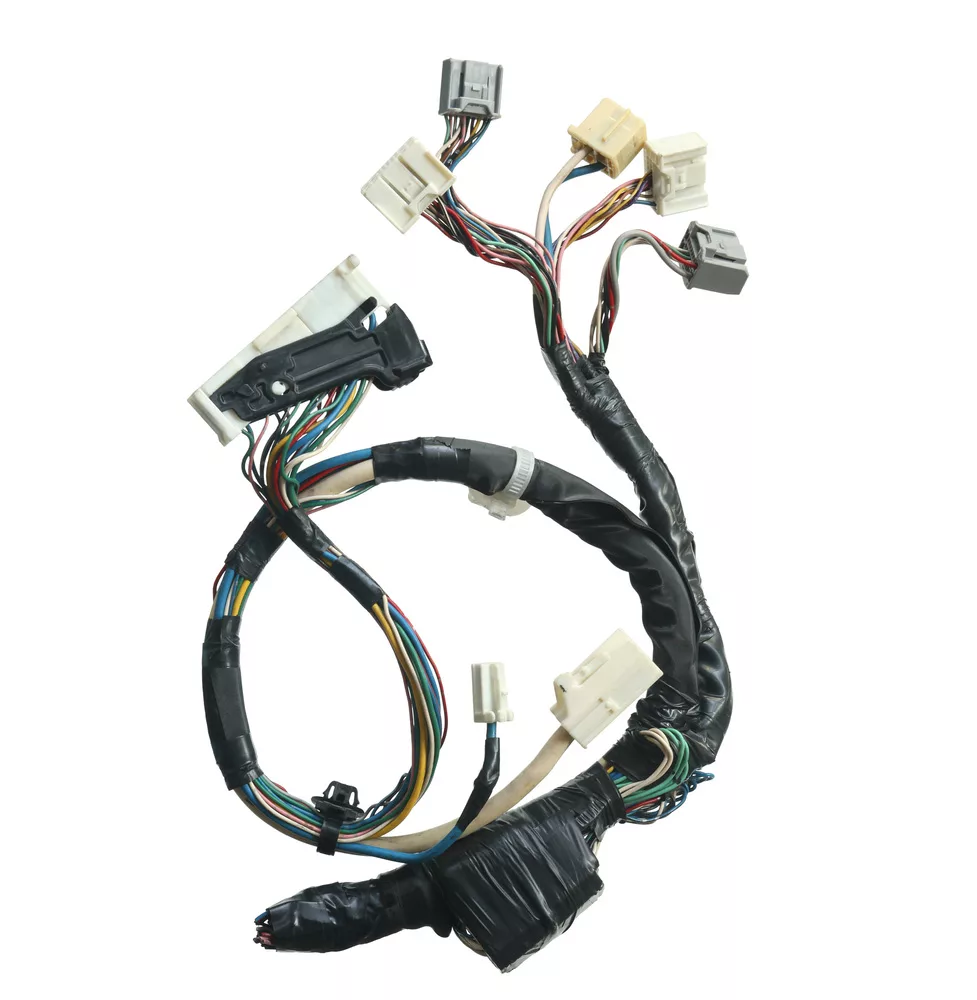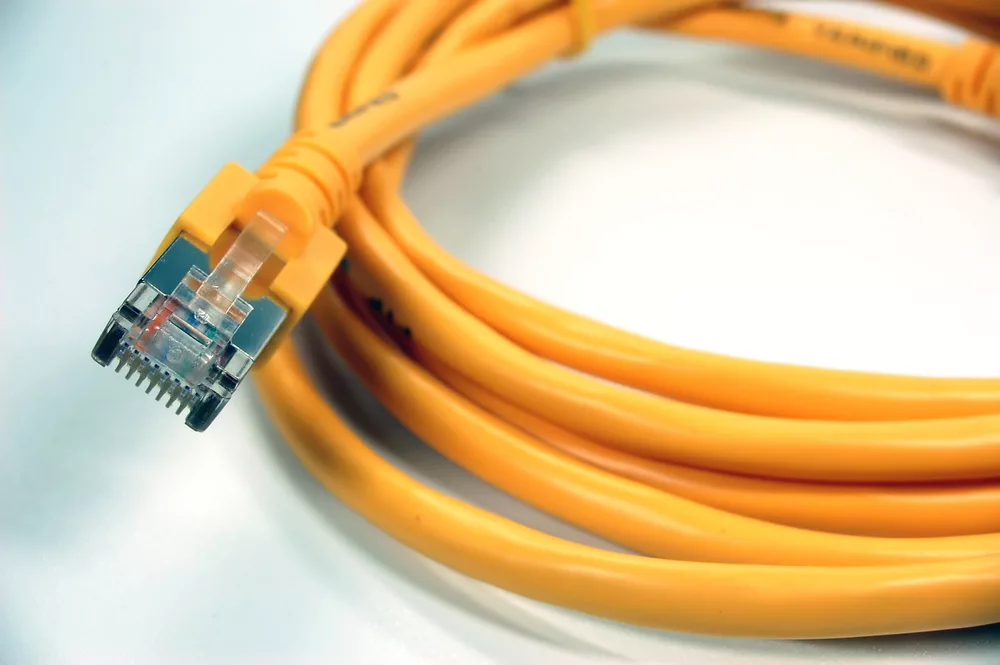How To Tell What Type of Ethernet Cable You Have? Are you trying to plug in your ethernet cable to your device but aren’t sure what ethernet cable you have?
When it comes to ethernet cables there are different types therefore don’t be surprised that you are a bit confused.
The article below will discuss how to tell what type of ethernet cable you have.
Table of Contents
- The Importance of Identifying the Type of Ethernet Cable
- How to Identify Ethernet Cable Types
- Is the Info Always the Same on Every Cable?
- Conclusion
The Importance of Identifying the Type of Ethernet Cable
Depending on your needs certain ethernet cables may benefit you.
For instance, if you are simply looking for cables that will eliminate crosstalk your best option is Cat 5e cables.
However, if you need a thin cable with fast transfer speeds an unshielded twisted pair Cat 6 cable is your best option.
With a better understanding of ethernet cable standards, you will be able to make a more informed decision.
How to Identify Ethernet Cable Types
On the side of your ethernet cable there’s printed information to help you identify the type of cable you have.
In order to understand the information mentioned follow the guide below.
Manufacturer (Cloom For Example)
Cloom Tech makes it possible for users to design and dedicate their cable and cable assemblies with extremely sturdy parts.
Furthermore, Cloom Tech ensures that all your products pass strict product management.

Wiring harness and cable assemblies
Jacket Fire Rating
All ethernet cables have an outer sheath called the cable jacket that protects the wires on the inside.
Cables jackets come in a number of variations designed for various applications.
Every cable jacket type is borne from the National Electric Code that was published by the National Fire Protection Agency.
Below are some of the various acronyms that most people are familiar with. However, there are some acronyms that a large number of people haven’t heard of.
- CATVP – Cable TV Plenum
- CMP – Communication Plenum (you can install it anywhere)
- CL2P – Class 2 Plenum (mainly for in wall installation in general spaces, plenum, and riser)
- CL3P – Class 3 Plenum (mainly for in wall installation in general spaces, plenum, and riser)
- CMR – Communications Riser
- CL2R – Class 2 Riser (mainly for in wall installation in non riser and riser spaces)
- Cl3R – Class 3 Riser (mainly for in wall installation in non riser and riser spaces)
- CATVR – Cable TV Riser
- CATV – Cable TV
- CMG or CM – Communications
- CL2 – Class 2 (mainly for in wall installation in non plenum and non riser spaces)
- CL3 – Class 3 (mainly for in wall installation in non plenum and non riser spaces)
- CATVX – Cable TV Residential
- CMX – Communications Residential/Outdoor
- CL2X – Class 2 Residential (mainly for in wall installation in non plenum and non riser spaces)
- CL3X – Class 3 residential (mainly for in wall installation in non plenum and non riser spaces)
A cables’ outer jacket doesn’t have any bearing in regard to cable type or generally any components in the cable.
Max Operating Temperature in Degrees Celsius
Extremely low and high temperatures might bring about various factors to consider.
Effects on Noise/Crosstalk and EMI on Ethernet Cables, Bandwidth Capacity and Transfer Speeds
When exposed to high temperatures the electrons in the conductor move freely leading to increased external noise and crosstalk.
Although it is not significantly affected by carrying temperatures, an extremely cold or hot climate will affect EMI in your cable.
In order to ensure optimum performance of your cables it is important to maintain the recommended temperature.
Effect on Cable Installation
If you are planning on installing a cable in extremely hot weather your cable will become soft and unable to pass through tight spaces.
However, if you are installing your cable in extremely cold weather it will get stiff and you might have trouble fitting it through tight spaces.
All reputable manufacturers of ethernet cables always list the cable’s temperature rating in regard to the standards set by the ANSI/TIA 568.
Number of Twisted Pairs in the Cable (4 Connectors in total 8 Conductors)
Twisted pair cables basically refer to cables with wires twisted in pairs around each other.
In each pair, one of the wires’ function is to ground interference while the other functions to transmit data.
To prevent crosstalk, signal interference, and noise during transmission twisting is brought about in the conducting cables.
Twisting helps reduce the effects of noise and cancels out external waves pushing some of the waves in the direction of the signal and the rest in the opposite direction of the signal.
Also, because your receiver can measure the amount of voltage difference between the two wires to retrieve data more efficiently, twisting helps provide improved noise resistance and lower signal attenuation.
Shielding Type ( UTP For example)
If the printed details on the cable’s jacket state STP it means shielded twisted pairs.
However, if it states UTP it means unshielded twisted pairs meaning the conductors are twisted but there is no shielding.
With unshielded cables you will likely face more attenuation and crosstalk compared to shielded cables.
In regard to the International Organization for Standardization or the International Electrotechnical Commission 11801 standard cable names must adhere to a certain format (XX/XXX). Below is a representation of the format.
- U – Unshielded
- F – Foil
- S – Braid Screen
- SF – Braided Screen Plus Foil
The first X or two Xs refer to the cable’s shielding while the third X refers to the shielding of each pair and the last two Xs mean the cable has twisted pairs.
Wire Gauge
AWG (American Wire Gauge) refers to the size of each conductor wire. The lower the number the thicker the conductor size.
For instance, a Cat 5e is 24 AWG. However, if you are trying to determine the cable to connect to your device AG isn’t an important factor because the cable is already connected to a connector.
Certification
Certification is important to ensure your ethernet is up to date with the performance and safety standards of the market. Below are some of the certification standards.
- RoHS – refers to the lead-free and restricted use of hazardous components used in the production and construction of the cable.
- cETLus – meaning it is verified by the ETL therefore, the product is compliant with the North America Electrical and Safety Standards which includes those written by the UL and CSA.
- UL – referring to the Underwriters Laboratories and TIE/EIA. If your cable is TIA/EIA and UL certified, it means it underwent testing to ensure it is compliant to the legal standards the cable was designed in regard to.
Category Cable Type
Category is the key specification that defines an ethernet cable that you will find printed in your cable jacket for example Cat 7 or Cat 6a.
The printed term Cat refers to the category referring to the specification a cable supports. Specifications for ethernet categories are standardized by the TIA.

Caption: Cat 5e Cable
Cable Bandwidth in MHz
The Electronic Industries Alliance/ American National Standards Institute does not use a class based system to categorize twisted pair cables.
Alternatively, all cable systems are grouped according to data rates (max bandwidth) they can support.
The specification describes the junction box, type of connector, and cable used to conform to a specific category.
The cable’s bandwidth and speed increase as the category number rises.
This isn’t by default because each category brings forth rigorous testing to increase oscillation and decrease crosstalk between wires.
In regard to physical differences, ethernet cables use different isolation and construction to enable faster speeds and eliminate crosstalk.
Cat 8, Cat 7, and Cat 6a cables from Cloom Tech use aluminum foil shielding and screen shield to reduce crosstalk.
For home connections, a Cat 6 or Cat 5e cable with a transfer speed of up to 1 Gbps should be fast enough.
It’s important to keep in mind that upgrading your cable doesn’t increase your internet speed because speed takes into consideration a number of factors and not just your cable’s speed.
However, for areas such as data centers and workstations speed is important.
XXXXFT
This indicates the foot marker you are using and is of importance if you plan on running your cable and measuring for installation.
MM/YY
This indicates the manufacturing month and year.
Is the Info Always the Same on Every Cable?
All ethernet cables are different or the same in one way or the other.
You will find that Cat 5e cables are the same as another category but the difference is in the number of twisted pairs, shielding, and temperature limit.
The above variations stress the importance of confirming your cable’s specifications to identify the best cable to serve your needs.
Although an ethernet cable is essential, it’s important to determine the cable’s standard.
Check the printing on the side of the cable to identify your ethernet cable.
Conclusion
Knowing the type of ethernet cable will help you better understand the type of cable that will better serve your needs.
The right ethernet cable will ensure you get a stable and fast connection. For all the best affordable and reliable cable options contact Cloom Tech.
